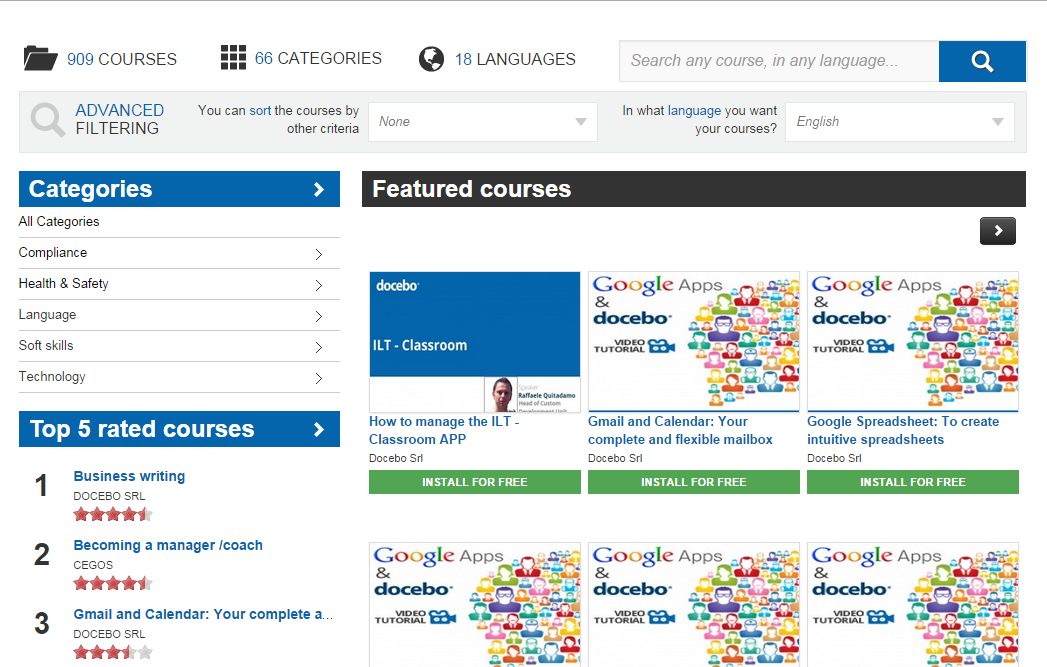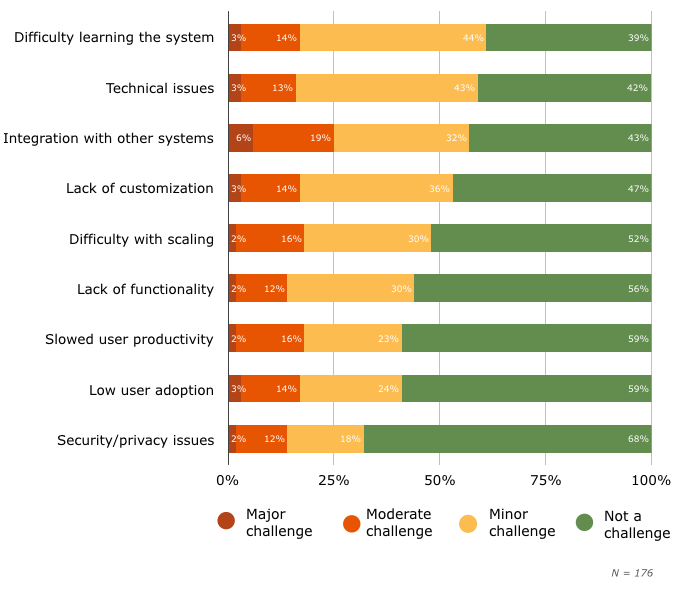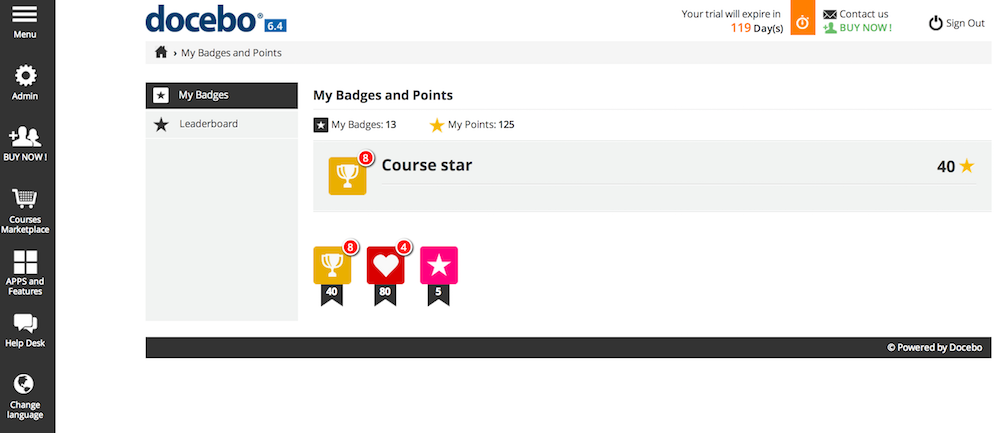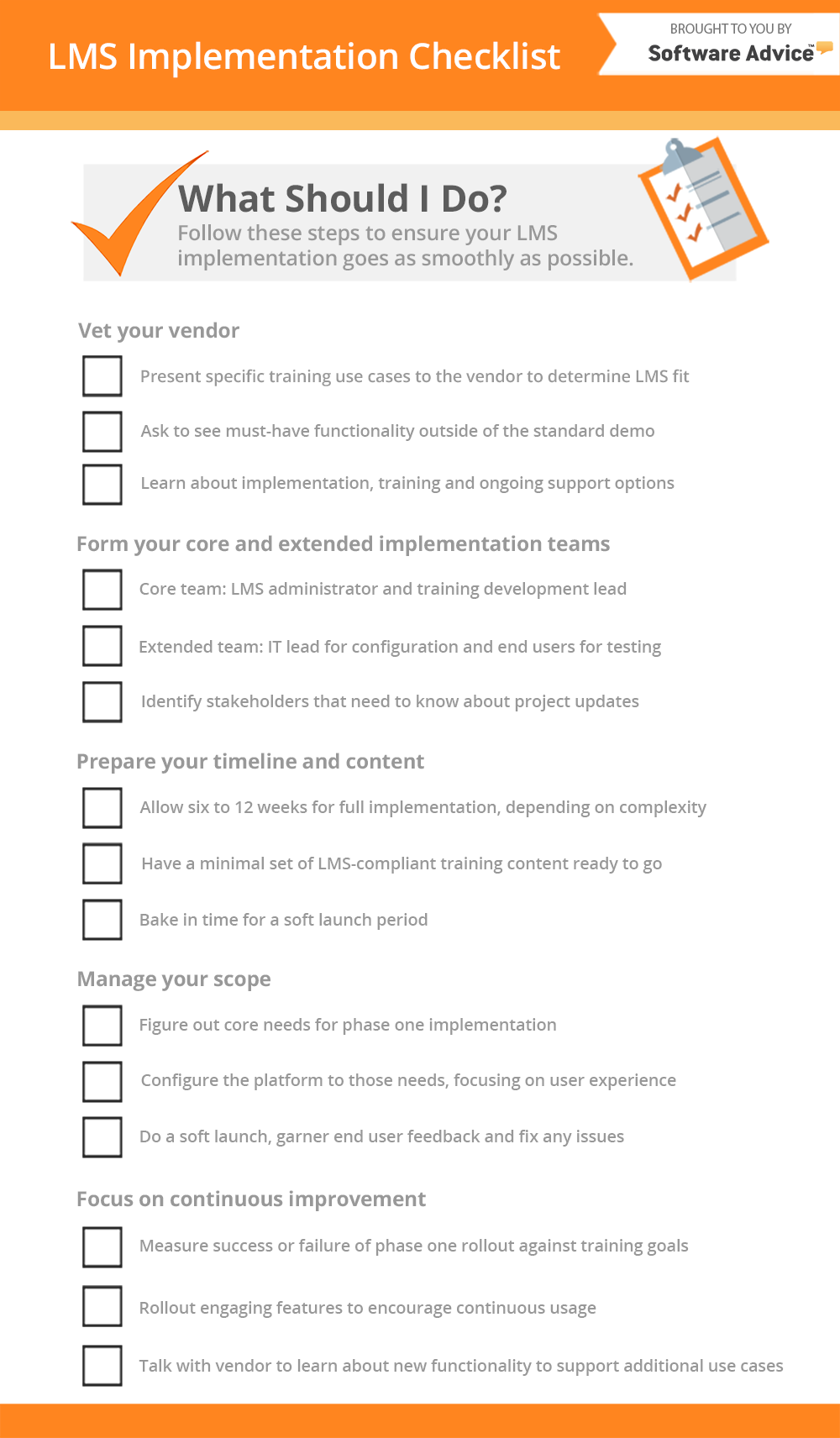7 Best Practices: Avoid Flunking Your LMS Implementation
According to Brandon Hall Group’s annual LMS Trends Study, 38 percent of companies using a learning management system (LMS) last year were actively looking to switch vendors. Software advisory firm Capterra also found that a quarter of LMS users were dissatisfied with their current system.
Both statistics are telltale signs of a failed LMS implementation—a frightening prospect for a business of any size that just laid down a hefty investment on a new system.
If your LMS implementation process is a smooth one, your organization’s learning and training initiatives will benefit immediately. Make enough crucial mistakes however, and your new platform may end up in the proverbial trash can before it has a chance to prove its worth.
With that in mind, here are seven best practices to ensure that you pass your LMS implementation with flying colors:
1. Vet Your Vendor Extensively
2. Establish Both Core and Extended Implementation Teams
3. Have LMS-Compliant Content Ready Beforehand
5. Bake in a Soft Launch Period
6. Get Real About Your Timeline
7. Adopt a Mindset of Continuous Improvement
Stick around to the end for a free, downloadable LMS Implementation Checklist outlining these best practices.
1. Vet Your Vendor Extensively
If you’ve reached the implementation stage, chances are high that you like what your new LMS is offering. That doesn’t mean you should stop asking questions, though.
Ask the vendor for more in-depth demos of key functionality to see exactly how your system handles it.
Understand every resource available to you in terms of implementation, training, data migration and support—including whether you have a dedicated account representative or not.
Present a prioritized list of use cases so you and your vendor can figure out how the system can best deliver on them.
Figure out what conversations don’t need to be had too. For example, if you plan to do e-commerce, your vendor will need to know what payment gateways and providers you’re using. If you’re not doing e-commerce, you can move on and focus elsewhere.


E-commerce in Docebo LMS
Don’t always rely on what your vendor says either. Read reviews from other users of your system to learn about the roadblocks they ran into during their implementation.
2. Establish Both Core and Extended Implementation Teams
Unlike payroll or marketing software, which can be isolated to a specific role or department, LMS software is often used by entire businesses to handle needs such as compliance training and employee skills development.
For some perspective, of the 1,300+ businesses that have contacted Software Advice looking for an LMS so far this year, 40 percent expect to have 1,000 or more users:
Prospective LMS Buyers, by Number of Users

With so many end users to consider, you need to set up your implementation team carefully to include every affected voice, but without having too many cooks in the kitchen.
Chris McRae, head of global implementations at Docebo LMS, recommends having a core implementation team of two members: whoever is going to be acting as the LMS administrator and a training lead responsible for LMS content. That’s it. This is the primary team that will work with the vendor to set up your system.
But you also need to form an extended team for specific purposes along the way. This should include an IT lead to handle needs and concerns surrounding configuration and integration with other systems, along with a small sample of end users (e.g., employees, customers, channel partners) for testing and feedback.
Lastly, create a list of stakeholders at the managerial and executive levels that need to be kept in the loop on implementation updates.
3. Have LMS-Compliant Content Ready Beforehand
An LMS without e-learning content is like a car without an engine. In either situation, you’ll go nowhere fast. Believing that basic training materials such as PDFs or PowerPoint presentations will suffice at the onset of your LMS implementation is also dangerous thinking.
Before implementation, McRae recommends companies have a “minimal set of content that’s nice and presentable, and has a good user experience” to test within your new system.
You should create a couple of courses for every planned use case of your LMS, whether that be compliance training for employees or new product instruction for channel partners.

“If you have your content ready to go—if you have those requirements and use cases prepped and ready—you can get going very quickly.”
Chris McRae, head of global implementations, Docebo LMS
Create training content in-house using a content authoring tool, or rely on premade courses from external sources such as Lynda.com (our research shows using a mix of both is the most popular option and the most beneficial). Some LMSs even have content authoring functionality built-in.
Once your content is ready, make sure it’s in a formatted package that your LMS can interpret and track, such as SCORM or Tin Can (also known as xAPI).
4. Beware of Scope Creep
You’re excited. After months of having to get buy-in from leadership and researching vendors, the time has finally come to roll out all of the awesome functionality in your new LMS.
Setting up e-learning courses and assessments is a given, along with learning administration. But then there’s course discussions, gamified leaderboards, customized learner paths, interactive simulations…
STOP.
This is what’s known as scope creep: the ever-present danger in any project where you keep adding requirements and objectives until the whole thing becomes an unruly mess that you can’t possibly deliver on. McRae says he sees it happen all the time in LMS implementations.
“LMSs have a ton of functionality; some are required for use cases and some are nice-to-have features,” McRae says. “You want to get a perfect LMS before you roll live so you start preparing for things that may not happen until six months or a year down the line.”
To avoid scope creep, identify the key requirements for your prioritized use cases and focus just on those needs for “phase one” of your LMS deployment.
Don’t overextend yourself. You can always roll out “nice-to-have” features later on, which is what you should be doing anyway to encourage users to come back to the system in the future (see Best Practice #7).
Check out a Software Advice video with additional tips on how to avoid scope creep:
5. Bake in a Soft Launch Period
Once you’ve configured the system to your liking and added content that’s working and presenting as it should, the biggest mistake you can make is to roll out the system company-wide right away. A whole host of quirky bugs that you couldn’t account for will undoubtedly come out of the woodwork and turn your organization off to your new LMS.
Last year, LMS users told us technical issues represented the second biggest challenge with their new system:
Top Challenges With LMS Software

Source: Learning Management System User Report – 2016
Before going fully live, do a one to two week soft launch where you bring in a select sample of end users from your extended implementation team to test your setup. Give them a specific list of tasks to perform, but also let them just play around with the system.
Afterward, survey them on their experience so you can learn what’s working well with your system, what isn’t and what things you hadn’t even considered.
6. Get Real About Your Timeline
When asked what, in his opinion, was the number one reason why an LMS implementation fails, McRae had an immediate answer: aggressive scheduling and a lack of commitment to setup.
Too often, whether it’s pressure from executives or organizations just wanting to get it over with, LMS implementations get squished into a tiny one-month time frame, which doesn’t leave a lot of room for error.

“You’re really pressed to get everything ready in a three week time frame,” McRae says. “The LMS may launch perfectly, but it may not, because you have to cut out some of the testing. You’re cutting out that soft launch period where you get feedback and make changes. Some of the things that reduce the risk of failure are eliminated in an aggressive schedule.”
Chris McRae, head of global implementations, Docebo LMS
McRae recommends that you plan anywhere from six to 12 weeks for your LMS implementation, depending on how complex your system is and how many resources you have on the project. Present your timeline to stakeholders as a way of ensuring that the system runs smoothly and provides the best return on investment.
7. Adopt a Mindset of Continuous Improvement
After your initial roll out, it’s time to measure the system’s effect on training goals and initiatives, deem the implementation a success or failure and call it a day.
If only it were that easy, right?
In reality, an LMS implementation is never truly done. Too easily, your organization’s usage of the LMS can drop off a cliff once excitement over having a new tool to play with dies off.
That’s why you need to adopt a mindset of continuous improvement. Plan not only to keep making what you have better over time, but also to roll out new and exciting features to keep your employees coming back for more.
“Doing different learning initiatives across teams and across organizations—competitions, gamification, social learning—all of those things are going to help your user adoption and keep people engaged in the system,” McRae says.


Learner badges and points in Docebo LMS
Stay in contact with your vendor to learn about new features as they’re introduced. You can also check out research we conducted last year to discover the top LMS features to drive employee engagement here.
LMS Implementation Checklist (Free Download) and Next Steps
You can remember all of that, yes? If not, don’t worry.
To help you take these best practices to heart, download our free LMS implementation checklist that incorporates everything we’ve discussed:

Here are some other next steps you can take to ensure success with your LMS implementation:
Read our LMS User Report. Learn how other LMS buyers have implemented their systems, the facets of their systems that they like most and, more importantly, the biggest challenges they’ve faced along the way.
Learn about user-generated content. A big portion of an LMS investment lies in content creation. Learn how user-generated content can not only cut employee training costs in half, but also engage learners.
See how one company did their implementation. Formatted as a Q&A, our case study with customer acquisition organization CLEARLINK about implementing their LMS, Bridge, can help first-time buyers understand what’s coming.